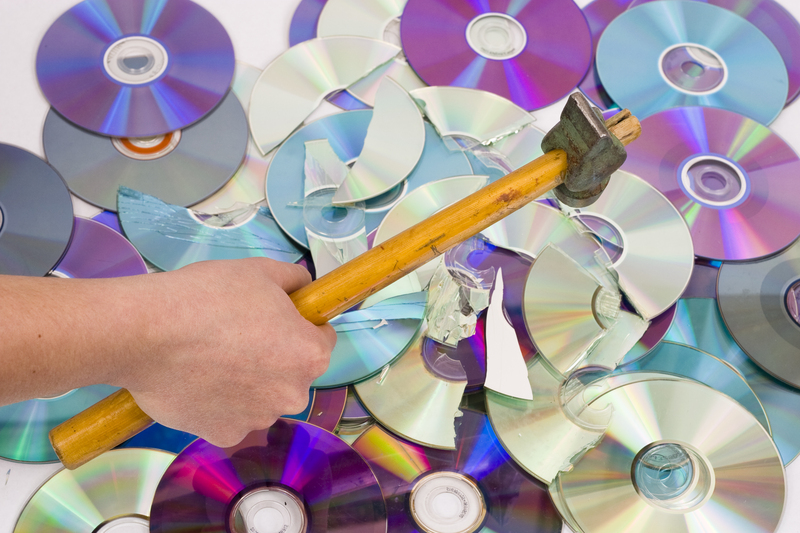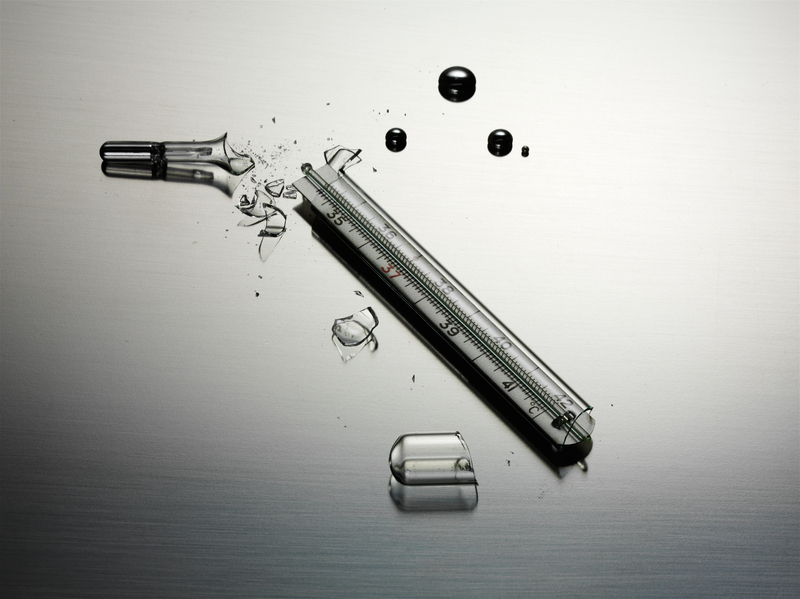How to Make Sure Your PPE Waste Is Disposed of Safely
Proper PPE waste disposal is essential in today's world, especially as personal protective equipment (PPE) is widely used in healthcare, industries, households, and public spaces. Disposing of used masks, gloves, gowns, and face shields safely not only protects human health but also helps safeguard the environment. This comprehensive guide will walk you through effective strategies and essential practices to ensure your PPE waste is disposed of responsibly and safely.
Understanding PPE Waste and Its Environmental Impact
Personal protective equipment includes items such as masks, respirators, gloves, gowns, face shields, and shoe covers. While these items play a crucial role in minimizing the spread of infectious diseases and protecting individuals, they are largely made from single-use plastics and non-degradable materials.
- Environmental Issue: Improperly disposed PPE has become a significant source of land and marine pollution.
- Health Hazard: Used PPE may carry infectious agents, posing health risks to waste handlers and the general public.
Making sure PPE waste is disposed of safely protects not just you, but the entire community and the planet.

Why Safe PPE Disposal Matters
Due to the global pandemic, the use of personal protective equipment has skyrocketed. According to environmental organizations, billions of single-use masks and gloves are discarded every month. Unsafe disposal of PPE waste can contribute to:
- Spreading infections through cross-contamination.
- Endangering sanitation workers handling unprotected waste.
- Clogging urban drainage systems leading to flooding.
- Endangering marine life through plastic contamination.
Safe and responsible PPE waste disposal is everyone's responsibility--from individuals and households to businesses and healthcare institutions.
Types of PPE Waste
Understanding the classification of PPE waste is the first step towards safe disposal. Here are the main types of PPE waste you may encounter:
- Medical PPE Waste: Used in healthcare settings, often contaminated with infectious agents.
- Non-medical PPE Waste: Used by the public, industries, and other sectors, possibly contaminated.
- Reusable PPE: Items like some face shields and cloth masks, require different cleaning and disposal protocols when worn out.
Step-by-Step Guide: How to Dispose of PPE Waste Safely
Step 1: Segregation at Source
Proper segregation of PPE waste is the foundation of safe disposal. Use color-coded bins to separate PPE from regular household or office waste. This helps waste collectors identify and handle PPE with caution.
- Red or Yellow Bags: Used for contaminated/medical PPE waste.
- Separate Bins: Allocate a dedicated bin for PPE waste in your home or workplace.
- Label Clearly: Use signs or labels to indicate 'PPE Waste Only' to prevent mishandling.
Step 2: Safe Handling Practices
- Never Reuse Disposable PPE: Discard masks and gloves after a single use, especially if visibly soiled or damaged.
- Avoid Direct Contact: Use gloves or tongs when handling used PPE to minimize exposure.
- Bagging: Double-bag used PPE to prevent leaks or accidental exposure.
Step 3: Guidelines for Specific Types of PPE Waste
- Face Masks/Respirators: Do not flush down toilets or dispose of in recycling bins. Place in a sealed bag and then in the general waste or designated PPE waste bin.
- Gloves: Remove carefully without touching your skin. Dispose in a similar manner as masks.
- Face Shields & Eye Protection: If single-use, follow mask disposal protocol; if reusable, disinfect thoroughly before disposing once damaged.
- Cloth Masks: Wash and reuse if intact; dispose as general waste if torn or heavily soiled by placing in a sealed bag.
Step 4: Timely Collection and Storage
- Don't Overfill Bins: Seal and replace PPE waste bags when 3/4 full to prevent spills.
- Secure Storage Area: Store sealed PPE waste bags in a dedicated, well-ventilated area away from common walkways until collection.
Step 5: Safe Disposal and Treatment
- Medical Facilities: Follow strict biomedical waste regulations. Engage licensed waste management companies for treatment (autoclaving/incineration).
- Public and Households: Place sealed PPE waste bags in general waste for municipal pick-up. Inform collectors if possible.
- Large Organizations: Partner with authorized waste handlers for regular pick-up and safe, eco-friendly disposal.
Never burn PPE waste at home as burning plastics can release toxic fumes. Always rely on proper waste collection systems!
Regulations Surrounding PPE Waste Disposal
Various countries and local authorities have enacted guidelines for PPE waste management. Ensure compliance by:
- Understanding your region's latest PPE waste disposal laws.
- Training staff and occupants on updated protocols.
- Displaying notices to educate about proper PPE disposal methods.
Healthcare settings may be governed by stricter biohazard waste rules, while public and commercial places may fall under general waste management guidelines with specific PPE waste provisions.
Challenges in PPE Waste Disposal
- Lack of Awareness: Many are unaware of the environmental and health implications of disposing PPE waste with regular garbage.
- Inadequate Infrastructure: Not all urban or rural areas have dedicated PPE waste collection systems.
- Increasing Volume: The unprecedented rise in PPE usage challenges existing waste management resources.
Best Practices for a Sustainable Future
1. Reduce and Reuse Where Possible
- Switch to Reusable PPE: Use washable cloth masks and reusable face shields where appropriate and safe.
- Promote Rational Use: Avoid stockpiling or using unnecessary PPE to limit waste generation.
2. Educate and Create Awareness
- Community Programs: Launch campaigns to teach the public about safe PPE disposal practices.
- Workplace Training: Regularly update staff on proper waste handling procedures.
3. Support Innovations in PPE Waste Recycling
- Look for Programs: Some regions are piloting schemes to recycle certain types of PPE, converting plastics into usable materials.
- Advocate for Research: Encourage development of biodegradable PPE alternatives and advanced recycling technologies.
4. Collaborate with Authorized Waste Collectors
- Partner with Experts: Let trained professionals handle collection, transport, treatment, and disposal to ensure PPE waste is disposed of safely.
- Obtain Proof of Safe Disposal: For organizations, maintain records of PPE waste collection and processing for compliance and transparency.
What Not to Do When Disposing PPE Waste
- Do Not Litter: Never throw masks, gloves, or other PPE items on streets, public places, parks, or into open drains.
- Do Not Mix with Recycling: PPE waste is not recyclable and should never be placed with paper, plastic, or glass recyclable waste.
- Do Not Handle with Bare Hands: Protect yourself when dealing with potentially contaminated PPE by wearing new disposable gloves or using tools.

Frequently Asked Questions About Safe PPE Waste Disposal
Is it safe to put used PPE waste in my household garbage bin?
If your local authority does not have a separate PPE waste collection service, place used PPE in a sealed bag (double-bagging is recommended), then dispose of it in the general waste bin. Avoid filling the bin to capacity and inform the waste collector if you can.
Can I recycle my used face masks or gloves?
Currently, most single-use PPE items such as masks and gloves cannot be recycled due to contamination risks. Specialized recycling programs are emerging, but for now, follow local disposal advice and keep PPE waste out of recycling streams.
What should I do if my office produces large volumes of PPE waste?
Arrange for regular collection with a licensed medical or hazardous waste management company. Ensure employees are trained on proper segregation and disposal protocols. Always maintain records to prove compliance.
How do I disinfect reusable PPE before disposal?
Wash reusable cloth masks at high temperatures using detergent. For equipment like face shields, use recommended disinfectants. Once worn out or damaged, dispose of in a sealed bag as non-recyclable waste.
Conclusion: The Path to Responsible PPE Waste Disposal
Ensuring safe and responsible PPE waste disposal is vital in maintaining public health and minimizing environmental impact. Whether you are handling small amounts at home or managing large volumes in healthcare and businesses, the principles remain the same: segregate, handle safely, store securely, and dispose via approved methods.
By following the steps described above and spreading awareness, we can all play a part in protecting our communities and the ecosystem. As new materials and waste management technologies are developed, stay informed and adaptable, always prioritizing both human safety and planet sustainability.
Key Takeaways
- Always segregate your PPE waste at the source.
- Handle and store PPE waste with care.
- Never place used PPE in recycling bins or litter in public spaces.
- Work with authorized waste collectors and follow local regulations.
- Educate others on the importance of responsible PPE waste disposal.
Together, let's make sure all PPE waste is disposed of safely and responsibly--for ourselves, others, and our planet.
